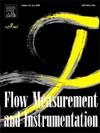Numerical optimization of bevel angle in conical entrance multihole plates to reduce pressure losses
IF 2.3
3区 工程技术
Q2 ENGINEERING, MECHANICAL
引用次数: 0
Abstract
Multihole plates are employed in many fluid flow systems with purpose to eliminate the issues arisen from distorted flows created by pipe fittings or to control pressure or flow rate in the line by its high pressure loss. However, high pressure losses are undesirable in the flow system since causes lots of pump power consumption. Therefore, to minimize its high pressure loss, conical entrance multihole plate type was considered in this study and optimized numerically by varying orifice inlet conical angle.
Multihole plate inside a horizontal straight circular pipe with standard length requirements upstream and downstream were tested numerically with steady adiabatic and isothermal water flow over a wide range of Reynolds numbers between 2967 and 847728 utilizing time averaged turbulent flow equations. Published empirical data and formulas validate the numerical results. Upon plots of flow coefficients, an optimum conical angle around 20° which makes the pressure loss minimum was determined as regardless of Reynolds number. In comparison to multihole plate with sharp-edged orifice inlets, pressure loss was reduced by 48–55 % at this optimum conical angle, about 25 percent more efficient than 45° conical angle as a familiarized one. Reynolds number independence region starts at very low Reynolds number for MO plate with conical angles below 30°, nearly eight times smaller than one for 45° conical angle. Vena contracta velocity was found responsible on the turbulence production in the orifice flow expansion section which leads to most pressure loss caused by MO plate drag. Therefore, orifice conical geometry reduced pressure loss by yielding lower Vena contracta velocities compared to sharp square-edged orifices.
求助全文
约1分钟内获得全文
求助全文
来源期刊

Flow Measurement and Instrumentation
工程技术-工程:机械
CiteScore
4.30
自引率
13.60%
发文量
123
审稿时长
6 months
期刊介绍:
Flow Measurement and Instrumentation is dedicated to disseminating the latest research results on all aspects of flow measurement, in both closed conduits and open channels. The design of flow measurement systems involves a wide variety of multidisciplinary activities including modelling the flow sensor, the fluid flow and the sensor/fluid interactions through the use of computation techniques; the development of advanced transducer systems and their associated signal processing and the laboratory and field assessment of the overall system under ideal and disturbed conditions.
FMI is the essential forum for critical information exchange, and contributions are particularly encouraged in the following areas of interest:
Modelling: the application of mathematical and computational modelling to the interaction of fluid dynamics with flowmeters, including flowmeter behaviour, improved flowmeter design and installation problems. Application of CAD/CAE techniques to flowmeter modelling are eligible.
Design and development: the detailed design of the flowmeter head and/or signal processing aspects of novel flowmeters. Emphasis is given to papers identifying new sensor configurations, multisensor flow measurement systems, non-intrusive flow metering techniques and the application of microelectronic techniques in smart or intelligent systems.
Calibration techniques: including descriptions of new or existing calibration facilities and techniques, calibration data from different flowmeter types, and calibration intercomparison data from different laboratories.
Installation effect data: dealing with the effects of non-ideal flow conditions on flowmeters. Papers combining a theoretical understanding of flowmeter behaviour with experimental work are particularly welcome.
 求助内容:
求助内容: 应助结果提醒方式:
应助结果提醒方式:


